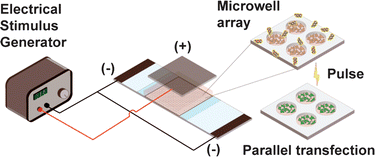Highly parallel introduction of nucleic acids into mammalian cells grown in microwell arrays†
Abstract
High-throughput cell-based screens of genome-size collections of cDNAs and siRNAs have become a powerful tool to annotate the mammalian genome, enabling the discovery of novel genes associated with normal cellular processes and pathogenic states, and the unravelling of genetic networks and signaling pathways in a systems biology approach. However, the capital expenses and the cost of reagents necessary to perform such large screens have limited application of this technology. Efforts to miniaturize the screening process have centered on the development of cellular microarrays created on


 Please wait while we load your content...
Please wait while we load your content...